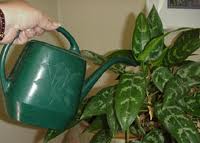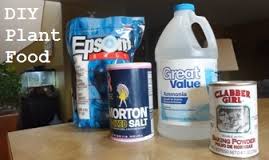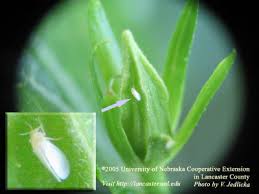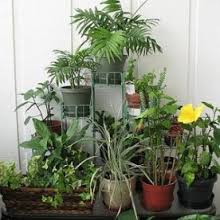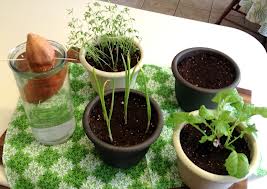Light:
- Most
flowering plants need to be within three
feet of a sunny window.
- Most
plants require 12 to 16 hours of light per
day.
Water:
- In late fall, water houseplants sparingly until
the light begins to increase in the new year.
- More
houseplants die from overwatering than from
anything else.
- Water
plants with room-temperature water.
- Add
a few drops of ammonia to one quart of water
used for houseplants; it will improve foliage color and increase growth.
- Water
houseplants in unglazed clay pots
frequently.
- frequent
mistings under the leaves of
houseplants will discourage spider mites.
- If
your houseplant leaves are dripping, even
when you haven't watered, it's trying to rid itself of excess water
(called
"guttation"). This makes a plant vulnerable to disease-causing
bacteria, so you'll want to avoid this problem by reducing the amount
of water
you're giving the plant, especially in these winter months. Also, watch
those
drips because they contain salts, sugars, and other organics that could
stain
whatever it is they're dripping on.
Humidity:
- Most
houseplants are happiest when the relative
humidity is 50 percent or higher.
- Group
houseplants near each other to form a
support group to cope with the low humidity of most winter homes.
Fertilizer:
- Fertilize
your houseplants frequently to ensure
vigorous growth.
- In
winter, however, feed sparingly; house plants
will be sensitive to overfeeding at this time of year.
Pests:
- To get rid of bugs in houseplants, push a clove
of garlic into the plant's soil. If the garlic sprouts and grows, just
cut it
back.
- Spider
mites are apt to thrive in warm, dry
houses. Frequent misting under the leaves of houseplants will
discourage them.
A solution of 1 cup flour, 1/4 cup buttermilk, and a gallon of cool
water,
applied in a mist, is a good organic deterrent.
- Your
houseplants may sprout bugs once brought
inside your house because they no longer have outdoor predators.
- Remove
aphids from houseplants with a mixture of
equal parts rubbing alcohol and water and add a drop of dishwashing
detergent.
Apply this to troubled plants with a soft brush.
Winter moths:
- In
colder regions, houseplants that have been
outside for the summer should be brought in at the end of of July. A
sudden
cold spell will be too much of a shock for them to survive. This is
also a good
time to take cuttings.
- It's also good to bring in plants before you
start heating your home. This gives them a chance to adjust. Wash them
thoroughly before bringing them in to rid them of any pests and eggs.
- You
can also dig up your rosemary, basil,
tarragon, oregano, marjoram, English thyme, parsley, and chives to grow
them
inside as houseplants. Keep them in a cool, sunny spot, and allow the
soil to
dry out before watering. Snip off the leaves as needed in the kitchen,
but do
not strip them completely.
- Divide
and re-pot any pot-bound plants so they
will grow well during spring and summer. Prune judiciously to create a
compact,
attractive specimen.
- Provide
extra protection to houseplants on
window sills if it is very cold. Place cardboard between the plants and
the
glass. Be sure the plants don't touch the windowpanes.
- As
houseplants are growing more slowly in
December light, cut down on watering by half until active growth
resumes. Hold
off on fertilizing as well.
- If
your plants seem a little worse for the
winter, provide lots of sunlight, fresh air, and frequent bathing.
More houseplant tips:
- Save the water from cooking pasta. Let it cool,
then use it to water houseplants.If the soil of your houseplants get
algae,
loosen the dirt in your pots periodically.
- Open
the doors and windows when temperatures
permit to give your house a change of air. This will benefit you and
your
houseplants. Re-invigorate your houseplants by removing the top 1/4
inch of
soil and top-dressing with fresh potting soil.


